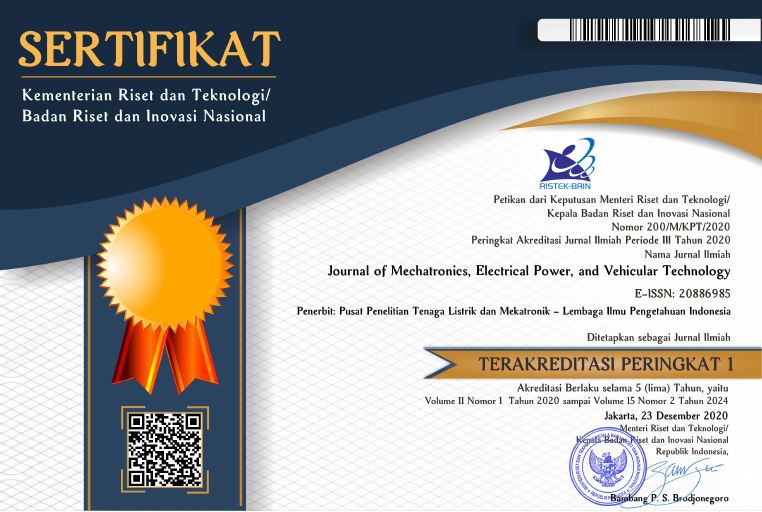The Influence of Injection Timing on Performance Characteristics of Diesel Engine Using Jatropha Biodiesel with and without Partial Hydrogenation
Abstract
Keywords
Full Text:
PDFReferences
A. Sarin et al., “Effect of Blends of Palm-Jatropha-Pongamia Biodiesels on Cloud Point and Pour Point,� Energy, vol. 34, pp. 2016-2021, 2009. crossref
D. Chaithongdee et al., “Effect of Antioxidant and Additives on the Oxidation Stability of Jatropha Biodiesel,� Kasetsart Journal Natural Science, vol 44, pp. 243-250, 2010.
Y.H. Chen et al., “Property Modification of Jatropha Oil Biodiesel by Blending with Other Biodiesels or Adding Antioxidants,� Energy, vol. 36, pp. 4415-4421, 2011. crossref
R. Fajar et al., “Predicting Fuel Properties of Partially Hydrogenated Jatropha Methyl Ester: Used for Biodiesel Formulation to Meet the Fuel Specification for Automobile and Engine Manufacturer,� Kasetsart Journal Natural Science, vol. 46, pp. 629-637, 2012.
K. Wadumesthrige et al., “Effects of Partial Hydrogenation, Epoxidation, and Hydroxylation on the Fuel,� Fuel Processing Technology, vol. 90, pp. 1292-1299, 2009. crossref
C. E. Papadopoulos et al., “Optimization of Cotton Seed Biodiesel Quality (critical properties) through Modification of its FAME Composition by Highly Selective Homogeneous Hydrogenation,� Bioresource Technology, vol. 10, pp. 1812–1819, 2010. crossref
T. Ganapathy et al., “Influence of Injection Timing on Performance, Combustion and Emission Characteristics of Jatropha Biodiesel Engine,� Applied Energy, vol. 88(12), pp. 4376-4386, 2011. crossref
B. S. Chauhan et al., “A Study on the Performance and Emission of a Diesel Engine Fueled with Jatropha Biodiesel Oil and its Blends,� Energy, vol. 37, pp. 616-622, 2012. crossref
C. Y. Chen et al., “Fuel Properties and Combustion Characteristics of Jatropha Oil Biodiesel–Diesel Blends,� Journal of the Taiwan Institute of Chemical Engineers, vol. 44, pp. 214-220, 2013. crossref
S. Puhan et al., “Effect of Biodiesel Unsaturated Fatty Acid on Combustion Characteristics of a DI Compression Ignition Engine,� Biomass and Bioenergy, vol. 34, pp. 1079-1088, 2010. crossref
R. Fajar et al., “Efek Penggunaan Biodiesel Kualitas Standar pada Kendaraan Komersial,� Laporan Teknis BTMP-BPP Teknologi, 2004.
Article Metrics
Metrics powered by PLOS ALM
Refbacks
- There are currently no refbacks.
Copyright (c)




















